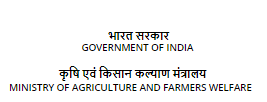Multi-fibrous crop based ribbon extractor(Decorticator)
Background:
Bast fibres are extensively used all over the world for their diversified value-added products like hessians, sacking, gunny bags, carpets, mats, rope, false ceiling boards, and many geotextile products. Jute, mesta, kenaf, hemp, ramie, flax, and nettle are the important bast fibre-producing crops in India. In India, natural fibres are considered the backbone of the textiles industry which is projected to reach $195 billion by 2025 from $138 billion currently. Also, plant-based fibres are offering livelihood to the millions of people living in our country. Around 40 lakh farm families are directly involved in only jute cultivation system. Besides, the jute-based industry provides direct employment to above two lakh industrial workers and livelihood to another 1.5 lakh people in the tertiary and allied sector. But in the present scenario, textile industries are forced to produce more and more fibre or fabric-based products in order to meet the demand of the ever-growing, unstoppable population. In the last couple of years, ‘sustainable’ and ‘organic’ have become indispensable buzzwords in India’s fashion industry with brands committed to being 100% organic and to using natural fibres. This open a new dimension for natural fibre-growing farmers in the market. Currently, the demand for natural fibres has been on a steady rise and this opens up opportunities for farmers in the country, especially for growing jute, kenaf, ramie, hemp, nettle etc. Moreover, these natural fibres have special characteristics and possess immense potentialities along with jute for creating a healthy, sustainable and environment-friendly choice of livelihood for the people:
Despite the commercial importance of these crops, farmers are losing interest in growing these crops, due to the problems associated with their cultivation, especially in green ribbon/bast extraction and retting operations. The conventional water retting operation is time-consuming: 18-21 days to complete the retting, water consuming: Plant: Water ratio = 1:20 or 432 cubic meters of water to rot per metric ton of raw jute (Majumdar et al. 2013), tedious:19-21% of total energy input (Shambhu 2016), and environmental polluting: generate a lot of waste-water and methane gas emissions (Sadrmanesh and Chen, 2018) process in nature. In addition to this, it also produces inferior quality fibre despite good crops being used which leads to a lower selling price in the market thus resulting in a lower net return to the farmers. Moreover, over the past few decades, water bodies are rapidly diminishing due to a variety of factors. So, farmers are willing to adopt other extraction processes, so that retting can be completed in a short period with less resource use. To make retting rapid with less resource use, many technologies like fungal retting, dry retting, ribbon etc. have been developed by various researchers in the last decade:
In this context, ribbon retting of jute is showing promising results by reducing the retting time by 5-6 days, water requirement from 1:20 to 1:10 substrate liquor ratio and environmental pollution to almost one-fourth in comparison to the conventional retting besides assurance of producing better quality jute fibre in terms of fibre strength, fineness, colour, lustre and overall, absolutely bark-free jute fibre (Banik et al. 2003). For executing the ribbon retting, it is necessary to extract the green ribbon from the plants either manually or mechanically:
To solve the issue, a number of mechanical extractors/separators/decorticators were developed by various researchers in past for individual fibrous crops but this is not sufficient for multi-fibrous crop-growing farmers. Hence, the present innovation was conducted to solve the extraction problem and develop a mechanical multi-bast fibre extractor for extracting the ribbon/bast/outer bark from jute, mesta, kenaf, hemp, ramie, and nettle crops/plants:
Technology Details:
This invention relates to the development of a mechanical ribbon extractor (decorticator) for multi-bast fibrous crops. More particularly, the present invention is directed to develop a mechanical solution for the extraction of ribbon from the entire length of harvested green bast fibrous plants i.e. jute, mesta, kenaf, nettle and hemp for executing the ribbon retting. The extractor (decorticator) machine according to the present invention consists of a feeding tray, ribbon extraction mechanism, ribbon conveying system, by-product delivery chute, power transmission system and a Variable Frequency Drive (VFD). The ribbon extraction mechanism mainly comprised a set of crushing rollers and separating rollers:
The throughput capacity of the machine was achieved in the range of 850-1100 kg/h whereas the extraction efficiency was achieved in the range of 85-92%. The average energy requirement of the machine was observed as 0.28 kWh (at no load) and 1.34 kWh (at load). The developed machine also helps in reducing the water requirement and retting duration by approximately 50 % and 10 days respectively as compared to the conventional retting process.


